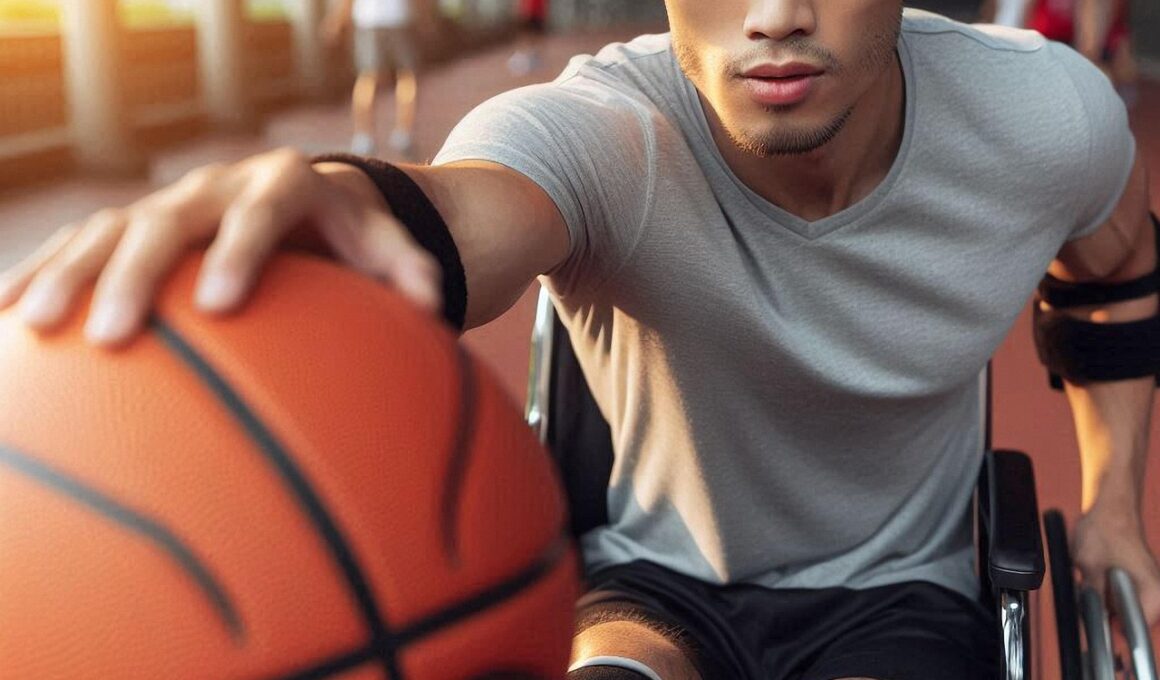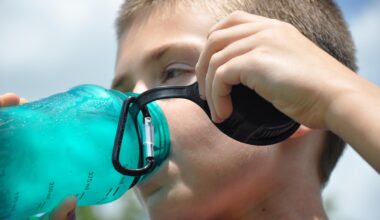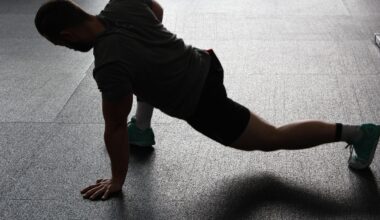Communication Challenges for Athletes with Disabilities and Solutions
In the realm of sports, effective communication plays a vital role, especially for athletes with disabilities. These athletes often face unique challenges that can hinder their performance and interactions during competitions. Miscommunication can lead to misunderstandings between athletes and coaches, affecting decision-making and execution. For some athletes, physical impairments may limit the ways in which they can communicate, creating barriers that can be difficult to overcome. Additionally, societal perceptions of disability can lead to further communication obstacles. Developing strong communication skills is essential for all athletes, but it is particularly crucial for those with disabilities who may need to advocate for themselves or educate others about their needs. Understanding non-verbal cues and using assistive technology can be beneficial strategies. As these athletes work to navigate their specific challenges, finding a supportive communication framework becomes paramount. Coaches also play an important role in helping athletes develop these skills. By fostering an environment of open dialogue, coaches pave the way for a more complete understanding between all parties involved. This paves the way for improved performance and overall satisfaction in the sport.
Understanding Communication Barriers
To effectively address the communication challenges faced by athletes with disabilities, it is crucial to first understand the barriers they encounter. These obstacles can arise from various aspects of communication, such as physical, emotional, and social factors. For instance, athletes may experience difficulty in articulating their needs or expressing their feelings due to their disabilities. This can lead to feelings of frustration and isolation, as they might struggle to connect meaningfully with their teammates and coaches. It is essential to recognize that poor communication can severely impact their confidence, motivation, and overall performance. Emotional barriers may stem from previous negative experiences or societal prejudices, causing athletes to withdraw and avoid necessary communication. Furthermore, social barriers can exist in team dynamics, where misunderstandings may arise due to a lack of awareness surrounding disabilities. Therefore, both teammates and coaching staff must engage in open conversations to foster understanding and mutual respect. Enhanced awareness of disability communication can help promote collaboration and teamwork, ultimately creating a more inclusive sporting environment. Establishing these connections will empower athletes, enabling them to thrive within their respective sports.
Effective Communication Strategies
Implementing effective communication strategies can significantly impact athletes with disabilities both on and off the field. Coaches and support teams must actively assess and adapt their communication styles to cater to the needs of these athletes. One essential strategy is the use of clear, concise language when giving instructions. By avoiding jargon or complex phrases, coaches ensure that athletes fully understand the guidance provided. Additionally, incorporating visual aids or demonstrations can further enhance comprehension, particularly for athletes with cognitive disabilities. Utilizing technology, such as communication apps, can also be beneficial, allowing for real-time interaction and feedback. Encouraging athletes to voice their preferences regarding communication styles is another vital element. Athletes may have distinct preferences when sharing or receiving information, which necessitates flexibility among coaches and teammates. Regularly scheduled one-on-one feedback sessions can create a safe space for athletes to express concerns or share insights. By employing these strategies, coaches can foster a positive communication environment that promotes collaboration, understanding, and personal development, ultimately leading to improved athletic performance.
The role of peer support in developing communication skills cannot be underestimated. Teammates act as conduits of encouragement and reinforcement, particularly for athletes with disabilities. By facilitating open channels of dialogue, peers can help convey important messages within the team environment. Initiating team-building activities focused on communication can further enhance relationships among teammates. These activities promote trust and understanding, essential components in overcoming communication barriers. Engaging in inclusive practices enables athletes to learn together and share experiences. Such shared experiences can help bridge gaps that disabilities might create in traditional communication methods. The development of strong peer support networks correlates with improved morale and confidence. Athletes who feel supported are more likely to participate actively and share their ideas and challenges. Furthermore, these positive interactions can contribute to building camaraderie, fostering a sense of belonging. Coaches can leap forward in this initiative by integrating team-building sessions into formal training. These sessions should encourage collaboration and group discussions that emphasize effective communication. In doing so, athletes build rapport while enhancing their ability to communicate their thoughts and feelings in various settings.
Educating Coaches and Staff
To promote better communication strategies for athletes with disabilities, educating coaches and staff becomes an imperative priority. Adequate training equips them with the knowledge necessary to understand the unique needs of these athletes. Workshops and professional development sessions focused on disability awareness can open up a world of information on effective communication techniques. Coaches learning about different disabilities can better tailor their approach to meet each athlete’s requirements. Additionally, training in communication strategies, such as active listening and empathy, can foster a more inclusive environment. Understanding these aspects can significantly affect athletes’ performance and overall experience. Coaches and staff should engage in ongoing education, remaining abreast of best practices within sports psychology. Seeking advice from specialists in communications and disability can greatly enhance coaches’ abilities to support their athletes. Furthermore, fostering an inclusive environment involves collaboration, incorporating input from athletes themselves regarding their needs. Listening to athletes and advocating for them create empowered participants in their own communication journey. All these efforts contribute to a positive atmosphere in which athletes with disabilities can express themselves freely and confidently.
Feedback Mechanisms
Implementing effective feedback mechanisms is an essential step toward enhancing communication for athletes with disabilities. Feedback should be constructive, specific, and timely to ensure that athletes can learn and adjust their methods. Coaches can utilize feedback sessions to discuss performance, communication styles, and areas needing improvement. Establishing regular check-ins allows athletes to express their thoughts, providing vital insights into their experiences. These conversations create opportunities for mutual exchange, strengthening connections between athletes and coaches. Furthermore, incorporating technology in gathering feedback can lead to improvements in the overall communication process. Utilizing apps or subtle surveying tools enables athletes to provide real-time feedback, which can reveal critical barriers in their communication. Coaches must embrace the input genuinely, recognizing its importance in developing tailored strategies for each athlete. Moreover, athletes should feel encouraged to offer feedback to one another, thereby enhancing peer support and fostering a positive team spirit. Such an inclusive culture ultimately cultivates an environment where all athletes feel valued and motivated to improve their skills and communication techniques. By prioritizing feedback mechanisms, the performance of athletes with disabilities can be significantly enhanced.
Acknowledging the importance of communication for athletes with disabilities paves the way for continuous improvement and adaptation in training methodologies. Creating a culture of awareness, understanding, and inclusivity fosters an empowering environment where all athletes can thrive. An emphasis on communication skills not only benefits athletes with disabilities but also enriches the entire team dynamic. This collective growth engages every team member in a shared learning experience that enhances sportsmanship and camaraderie throughout the group. As athletes embrace their communication abilities, they naturally become more open and proficient in expressing themselves in competitive and casual settings. This increased confidence contributes to their overall performance and well-being, ensuring that communication becomes a tool for success rather than a barrier. An ongoing commitment from athletes, coaches, and staff to develop their communication skills ensures that all members are equipped to face challenging scenarios. Overcoming communication barriers leads to a better understanding of each athlete’s strengths and weaknesses, thereby strengthening the team as a whole. Ultimately, prioritizing communication lays the groundwork for empowering athletes with disabilities, offering them the opportunity to compete, connect, and excel.
To ensure a comprehensive approach, integrating communication training into the broader sports curriculum is essential for athletes with disabilities. Providing formalized guidance and resources allows athletes to develop their skills effectively and confidently. Educational institutions and sports organizations must prioritize inclusivity by implementing communication-focused programs. As part of this integration, specialized coaches or therapists can offer tailored assistance, ensuring athletes receive the appropriate support. Additionally, leveraging these resources can create opportunities for peer mentorship, allowing experienced athletes to guide others in developing their communication skills. Group workshops and seminars focused on real-life scenarios can reinforce their learning through practical engagement. Additionally, collaboration with experts in sports psychology and communication can provide valuable insights that inform curriculum development. By establishing an environment where communication flourishes, athletes will gain essential tools for self-advocacy and teamwork. This educational approach will yield long-term benefits, empowering athletes to navigate their challenges successfully and articulate their needs effectively. Ultimately, fostering such communication frameworks can redefine the sporting experience for athletes with disabilities, unlocking their potential and creating equitable playing fields in sports.


